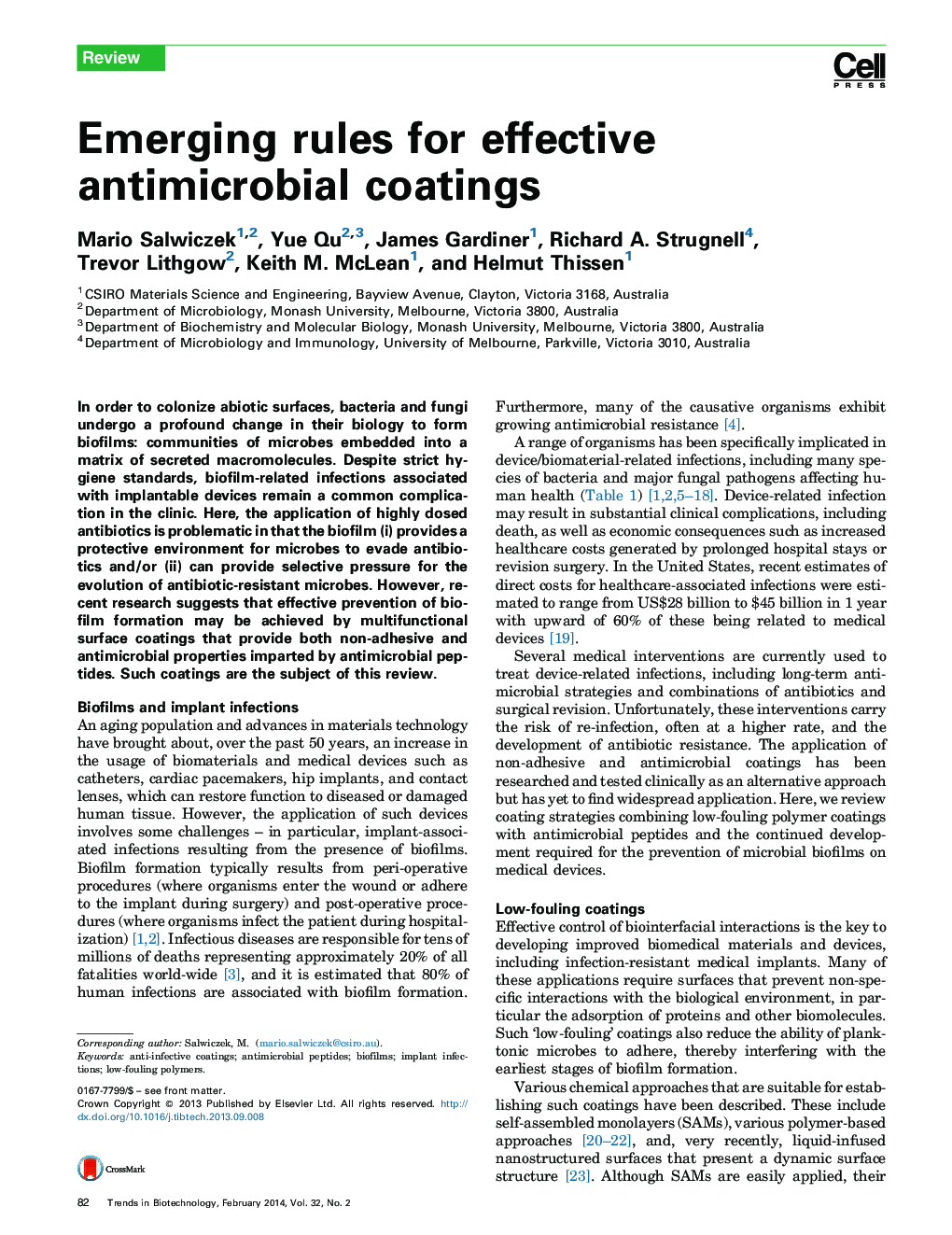| Article ID | Journal | Published Year | Pages | File Type |
|---|---|---|---|---|
| 36853 | Trends in Biotechnology | 2014 | 9 Pages |
•Microbial biofilms can cause implant failure and are difficult to treat.•Antimicrobial peptides hold promise as surface active antimicrobial agents.•Multifunctional coatings with different architectures are available.•Standardized in vitro and in vivo testing procedures are needed to evaluate coatings.
In order to colonize abiotic surfaces, bacteria and fungi undergo a profound change in their biology to form biofilms: communities of microbes embedded into a matrix of secreted macromolecules. Despite strict hygiene standards, biofilm-related infections associated with implantable devices remain a common complication in the clinic. Here, the application of highly dosed antibiotics is problematic in that the biofilm (i) provides a protective environment for microbes to evade antibiotics and/or (ii) can provide selective pressure for the evolution of antibiotic-resistant microbes. However, recent research suggests that effective prevention of biofilm formation may be achieved by multifunctional surface coatings that provide both non-adhesive and antimicrobial properties imparted by antimicrobial peptides. Such coatings are the subject of this review.
